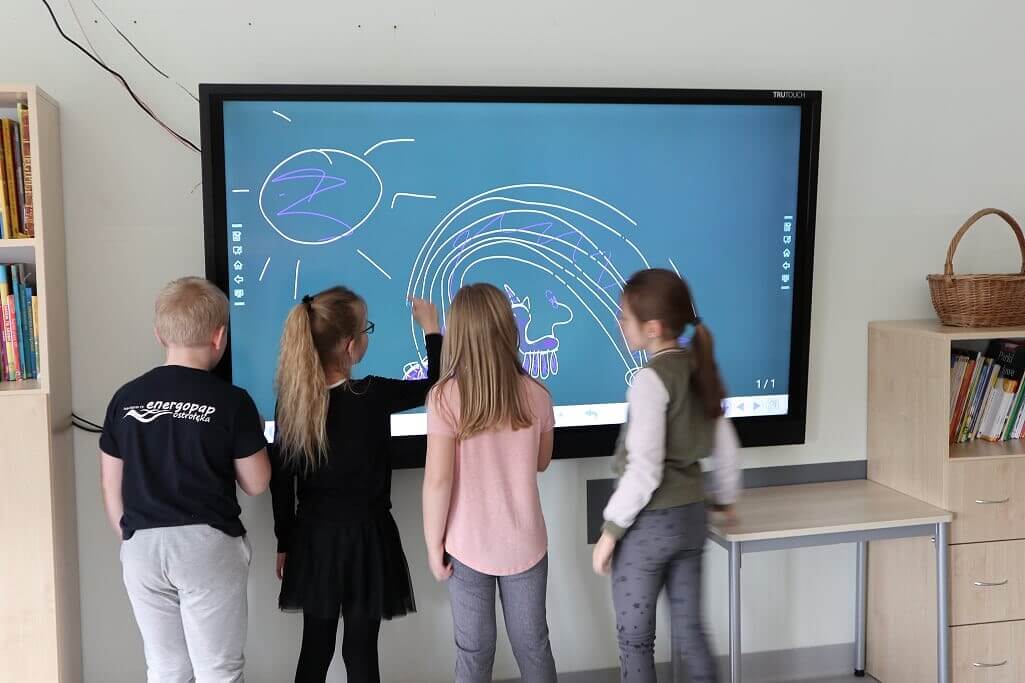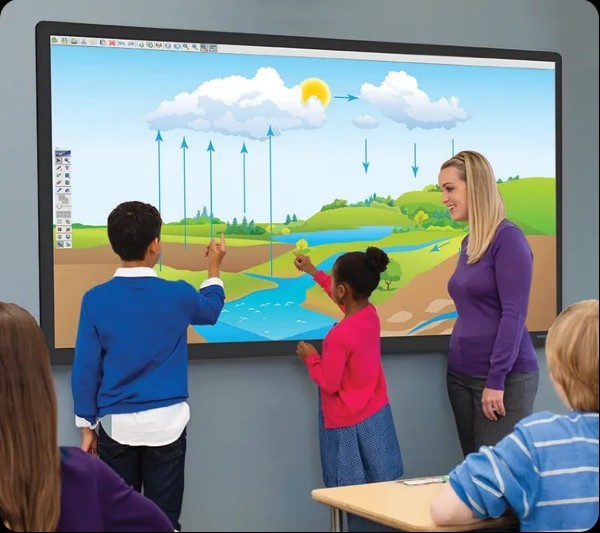In today’s fast-paced digital era, classrooms are evolving beyond the traditional chalkboards and projectors. Flat screen displays have emerged as a powerful tool in modern educational environments, revolutionizing the way students learn and teachers teach. With their vibrant visuals, interactive capabilities, and versatility, flat screen displays are reshaping the educational landscape, offering myriad benefits that enhance engagement, collaboration, and knowledge retention.

One of the most significant advantages of flat screen displays in classrooms is their ability to captivate students’ attention. Unlike traditional teaching methods, which may struggle to maintain engagement, flat screen displays offer dynamic multimedia content that appeals to diverse learning styles. Whether it’s videos, animations, or interactive presentations, these displays provide educators with the means to deliver content in a visually stimulating manner, fostering a more immersive learning experience.
Moreover, flat screen displays facilitate enhanced collaboration among students and between students and teachers. With features such as touchscreen capabilities and compatibility with interactive software, these displays encourage active participation and peer interaction. Collaborative learning activities, such as group projects and interactive quizzes, become more engaging and effective when facilitated through flat screen displays. Students can work together in real-time, share ideas, and manipulate digital content, fostering a cooperative learning environment conducive to knowledge exchange and teamwork.
Furthermore, flat screen TV displays empower educators with greater flexibility and creativity in lesson delivery. With access to a vast array of digital resources and educational applications, teachers can customize lessons to suit the unique needs and interests of their students. Whether it’s incorporating multimedia elements, integrating real-time data, or utilizing interactive simulations, these displays enable educators to create dynamic and interactive learning experiences that cater to diverse learning preferences.
In addition to enriching the learning experience, flat screen displays also contribute to improved information retention. Research has shown that visual aids, such as diagrams, charts, and videos, can significantly enhance memory recall and comprehension. By leveraging the visual capabilities of flat screen displays, educators can present complex concepts in a more digestible and memorable format, facilitating better retention and understanding among students.

Moreover, flat screen displays offer a more sustainable and cost-effective alternative to traditional teaching tools. Unlike chalkboards and projectors, which require constant maintenance and replacement of consumables, flat screen displays have a longer lifespan and lower operational costs. Additionally, their energy-efficient design reduces power consumption, contributing to environmental sustainability. By investing in flat screen displays, educational institutions can achieve long-term savings while minimizing their ecological footprint.
Another benefit of flat screen displays is their versatility and adaptability to various teaching scenarios. Whether it’s a small group discussion, a large lecture hall, or a remote learning session, these displays can accommodate different classroom configurations and teaching formats. With features such as wireless connectivity and remote access, educators can seamlessly integrate flat screen displays into their teaching repertoire, regardless of the instructional setting.
Furthermore, flat screen displays facilitate access to a wealth of digital content and resources, expanding learning opportunities beyond the confines of the classroom. Through online platforms, educational apps, and multimedia repositories, students can supplement their learning with additional materials tailored to their interests and learning objectives. Flat screen displays serve as a gateway to a vast digital library, empowering students to explore, discover, and engage with educational content beyond the traditional curriculum.
However, despite their numerous benefits, the widespread adoption of flat screen displays in classrooms is not without challenges. Issues such as digital equity, technological literacy, and screen time management require careful consideration to ensure that all students have equitable access to educational resources and that technology is used responsibly and effectively.
In conclusion, flat screen displays have emerged as indispensable tools in modern classrooms, enriching the learning experience, fostering collaboration, and enhancing information retention. With their versatility, interactivity, and multimedia capabilities, these displays empower educators to deliver dynamic and engaging lessons that cater to the diverse needs of students. As technology continues to evolve, flat screen displays will undoubtedly play an increasingly vital role in shaping the future of education, preparing students for success in the digital age.
Sources:
- https://edtechmagazine.com/k12/article/2023/12/classroom-flat-panel-trends-are-reshaping-how-kids-learn
- https://newline-interactive.com/interactive-touchscreens-in-the-classroom/
- https://thedispatchonline.net/7717/news/tv-monitors-enhance-education/
- https://www.linkedin.com/pulse/revolutionize-classroom-learning-flat-interactive-panels-negi
Leave a Reply